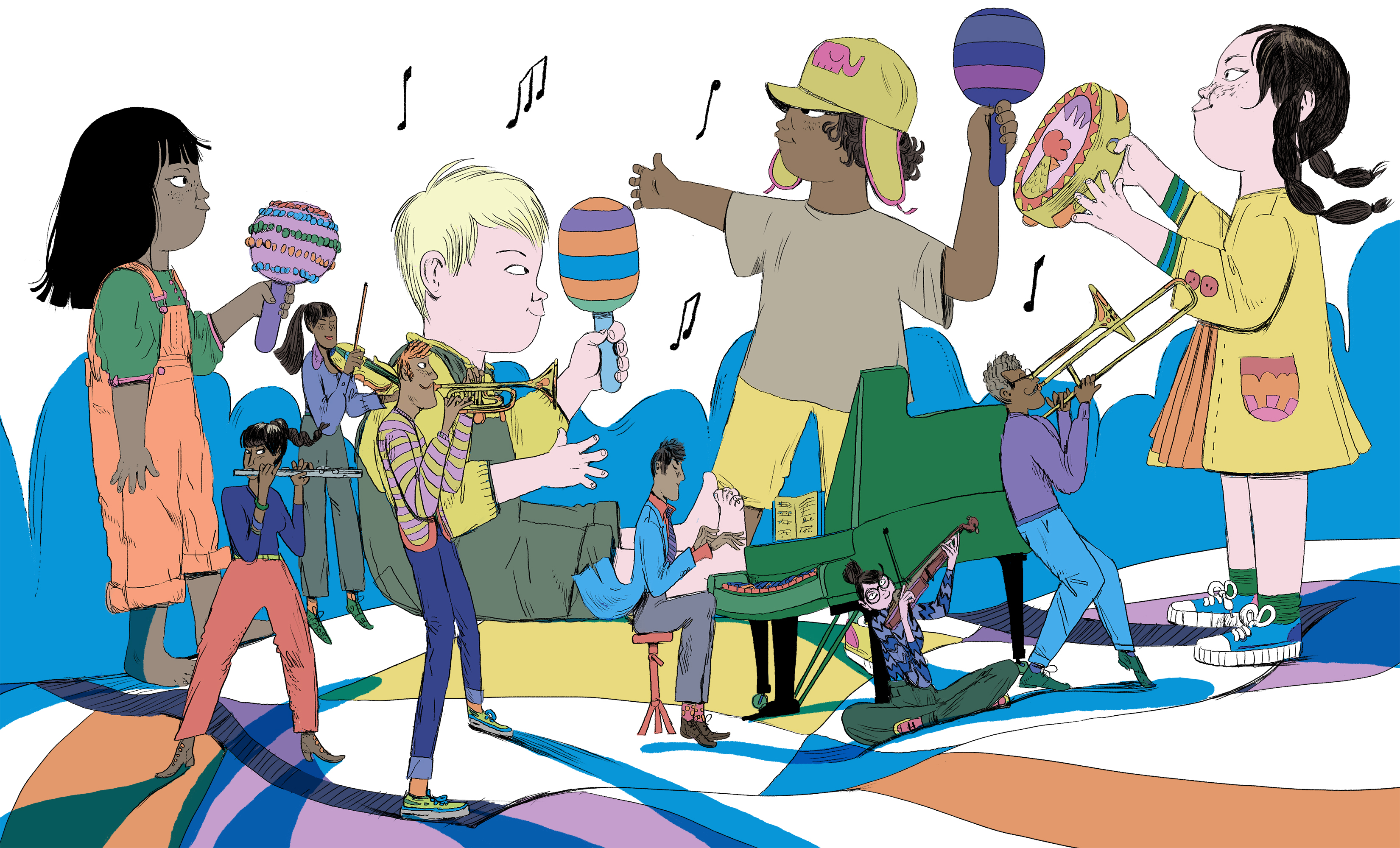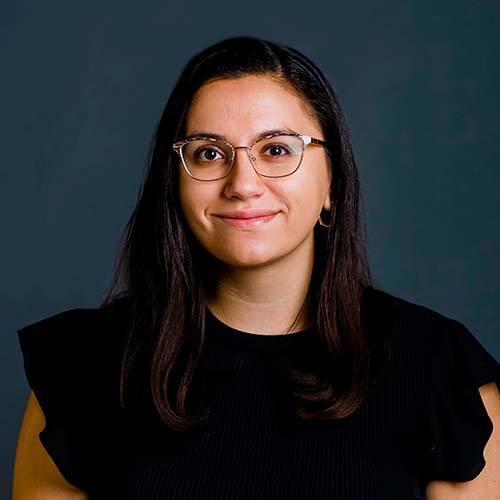Tunes for Tots
Milos Bjelica’s Artysh Lab brings classical concerts for babies—designed to promote early childhood development—to the Boston area

Illustration by Celyn Brazier
Tunes for Tots
Milos Bjelica’s (’23) Artysh Lab brings classical concerts for babies—designed to promote early childhood development—to the Boston area
When clarinetist Milos Bjelica was living in his native Serbia in 2013, he formed a chamber orchestra dedicated to performing classical music for children. Since then, he’s been exploring the positive impact of music on child development. In 2024, after he and his wife welcomed their first child, he was inspired to create a classical music concert series in the Boston area for babies up to three years of age. “I want him to grow up with classical music,” he says of his son.
Bjelica (’23) turned to his friend Neda Aleksic, a pianist and researcher who lives in Serbia and is completing a PhD in early childhood development at the University of Zagreb. Aleksic and her sister, a physician, are cofounders of Artysh Lab, an interactive concert concept that uses music and movement to help develop children’s cognitive, social, emotional, and motor skills.
Aleksic helped Bjelica establish Artysh Lab USA, which launched in October 2024 and hosts monthly interactive concerts for babies and children at The Foundry, a nonprofit that fosters creative collaborations, in Cambridge, Mass.
CFA spoke with Bjelica about how the concerts are structured, their impact on early childhood development, and his goals for growing Artysh Lab.
Q&A
with Milos Bjelica (’23)
How are the concerts you are producing important to early childhood development?
Kids can develop rhythm from an early age, even when they’re a few months old. Our concerts are interactive. Children and parents, they play together. The concerts are also really beneficial for parents, because they can socialize. When you have a kid, it’s very hard to socialize, so you meet other parents. Also, for kids, it’s beneficial because there are a lot of sensory moments and a big emphasis on movement in the concert.
How are the concerts organized?
At each concert, a maximum of about 30 people can attend. We have musicians. It’s usually a duo of some sort—violin and piano, clarinet and piano, flute and piano. It’s specifically those combinations because kids zero to three hear high pitches better than the low ones—so instruments like cello, viola, and bassoon don’t work for us. The concerts are around 50 minutes, and we have someone guiding parents and kids through the concert. It’s very interactive. Each song has its own prop—it could be a shaker, a colorful scarf, or some kind of interaction, like dancing.
Do you perform in the concerts?
If there is clarinet featured, I play the clarinet. So far, we’ve had the same [roster of] musicians, but my plan is to vary musicians. I’d like to give students a chance to play concerts. That would be a very beneficial experience for them.
What does the guide do during the concerts?
The guide, who is my friend Andres, explains the activities to parents, introducing the props that we have. He’s doing the activity itself with parents and kids. Sometimes we have a crowd that is very shy, so he works to get them and their parents comfortable. We often give kids these egg shakers, and sometimes they’ll put them in their mouths, which we reassure them is totally fine. This is their first instinct, and he’s just going around and helping them experience the best concert. Usually, we have both a simpler rhythm and a little bit more complicated rhythm. He’s also showing the rhythms before the concerts so parents can mimic them. Babies who are less than one year can’t really do those rhythms, but together with their parents, they can participate. They can hear and sense, which is the most important part. They’re still learning and absorbing.
How did you develop the concerts?
Neda came here in November 2024, and she helped me. These concerts are based on her research. She has very carefully chosen the songs and the activities that take place during the concert. There is something called the Dalcroze method, which combines music and movement. That’s a big part of the concert, this belief that music needs to come with movement in order to help children learn rhythm, for example.
What kind of feedback have you received from parents who have attended concerts?
So far, parents and kids are very happy. Around 60 percent of people have returned to a second concert. I think that’s the best feedback. Every concert, we see maybe 10 to 15 familiar faces along with maybe 10 new faces. We have a lot of people with European roots coming to our concerts, because this is something that is already somewhat common in Europe, in places like Germany and France. I haven’t really seen programs like this in the US. In Europe, usually these music programs for babies and children are “play-alongs,” which means someone is playing guitar and singing, and kids are singing along or playing some instruments, like percussion.
What’s next for Artysh Lab USA?
We recently organized our first workshops for kids ages three to six. With that, parents are really hands off in the back, just observing, and kids are doing the music workshop with us. The bigger goal for Artysh is to organize free concerts for foster kids, kids with special needs, and children without parents. They also need to hear music, and I think they will enjoy these concerts greatly. We are fundraising for that purpose.
